Professional Courses
Industry-relevant training in Business, Technology, and Design
Categories
Interactive Games
Fun games to boost memory, math, typing, and English skills
Typing
Memory
Math
English Adventures
Knowledge
JEE Advanced Marks vs Rank: Expected Cutoff and Previous Year Trends
JEE Advanced Marks vs Rank: Expected Cutoff and Previous Year Trends
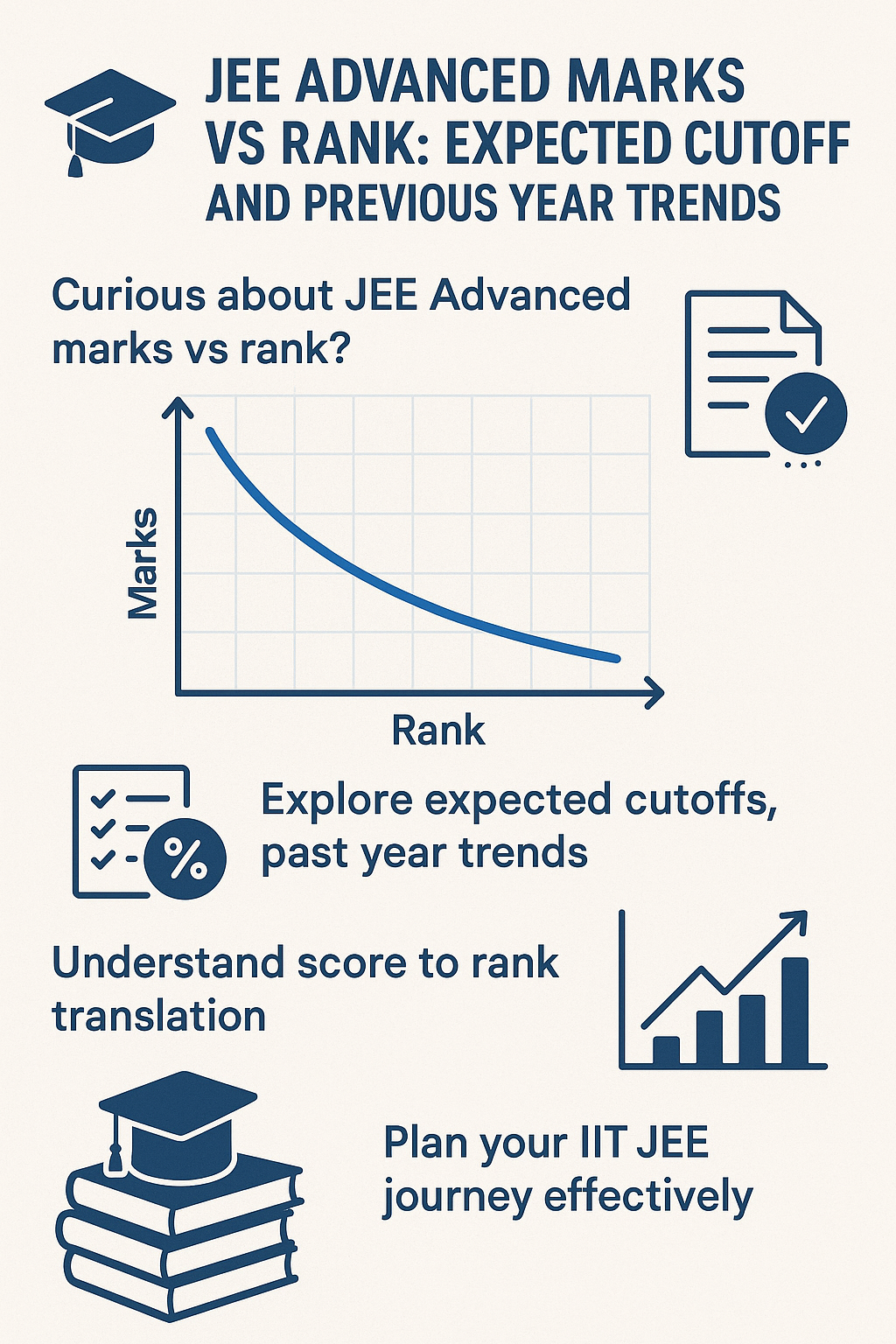
When students prepare for JEE Advanced, one of the most common questions is about marks and ranks. Everyone wants to know how many marks are needed to get into IITs, how ranks are decided, and what cutoffs to expect. Since JEE Advanced is the deciding exam for IIT admissions, understanding this relationship becomes very important. In this article, we will break down JEE Advanced marks vs rank, discuss cutoff trends from previous years, and help you form a clear strategy for your preparation.
Preparing for JEE is not just about studying hard, it is also about studying smart. Knowing how marks translate into ranks gives you clarity on where you stand and how much effort you still need to put in. Let us start by first understanding how JEE Advanced ranking works.
JEE Advanced At a Glance
- Full Form: Joint Entrance Examination Advanced
- Conducting Authority: One of the IITs on a rotational basis under the Joint Admission Board (JAB)
- Purpose: Entrance test for admission to IITs and some other top institutes
- Eligibility: Top 2.5 lakh JEE Main qualifiers, with category-wise cutoffs
- Mode of Exam: Computer-based test (CBT)
- Frequency: Once a year, usually in May/June
- Duration: Two papers of 3 hours each (both compulsory)
- Subjects Covered: Physics, Chemistry, Mathematics
- Language: English and Hindi
- Marking Scheme: Varies (includes full, partial, and negative marking)
- Difficulty Level: Considered one of the toughest entrance exams in the world
- Admission Scope: IITs, IISc, and some other centrally funded institutions
How JEE Advanced Marks and Ranks Are Calculated
The JEE Advanced exam has two compulsory papers. Each paper contains questions from Physics, Chemistry, and Mathematics. The final score is the sum of marks from both papers. Once the scores are compiled, students are ranked according to their total marks.
It is important to note that the JEE Advanced ranking system also considers subject-wise marks. If two students have the same total score, then subject-wise performance is used as a tie-breaker. This ensures that students are ranked fairly and consistently.
Another factor to understand is that cutoffs vary every year. This happens because difficulty levels change, student performance changes, and the number of seats in IITs also matters. So, instead of aiming for just the cutoff, it is always better to aim higher.
If you are just starting your JEE journey and want a solid base, you can explore AllRounder.ai courses for Class 11 and Class 12. These courses are structured to give you clarity in concepts and help you stay consistent.
Expected Cutoff for JEE Advanced
Every year, IITs release the cutoff marks after the exam. The cutoff is the minimum score needed to qualify for the rank list. However, this cutoff is not the same as the closing ranks for IIT admissions. It only decides who is eligible for ranking.
For example, the qualifying cutoff for JEE Advanced in previous years has ranged between 30% and 35% of the total marks for the general category. For reserved categories, the cutoffs are lower. This means that even if the paper is tough, you don’t necessarily need a very high percentage to qualify.
Students often confuse cutoff marks with marks required for top IITs. Just clearing the cutoff is not enough for good branches in IITs. To secure Computer Science or other core branches in top IITs, you need much higher marks.
If you want to practice tough problems and prepare systematically, AllRounder.ai’s practice games can help make your preparation engaging and effective.
JEE Advanced Marks vs Rank: Previous Year Trends
Looking at past years is the best way to understand how marks relate to ranks. Let us take an example. In a recent JEE Advanced exam, a score of around 340 out of 360 could give a rank in the top 10. On the other hand, a score of 100 to 110 could be enough to secure a rank in the top 10,000.
The general trend shows that:
- For a top 100 rank, students usually need more than 75% of total marks.
- For a rank under 1000, about 55% to 60% marks are required.
- For a rank under 5000, around 35% to 40% marks may be sufficient.
This means that even if you cannot score very high marks, you still have a chance to get into an IIT if you fall within the cutoff range.
To strengthen your preparation, you can also explore AllRounder.ai CBSE courses, ICSE courses, or IB courses, since many students take JEE while preparing for their board exams as well.
Why Cutoff and Ranks Vary Every Year
There are several reasons why marks vs rank trends are not fixed. Some of the main factors are:
-
Difficulty Level of the Paper – If the paper is very tough, even lower marks can secure good ranks. On the other hand, if the paper is easy, higher marks will be needed.
-
Number of Students Appearing – If more students perform well, competition increases, and cutoffs rise.
-
Total Number of Seats – The number of IIT seats available also affects closing ranks for various branches.
-
Category Quotas – Different categories have different cutoffs, which means ranks can differ significantly for the same marks depending on the category.
Since you cannot control these factors, the only safe approach is to prepare for the highest possible score.
How to Use Marks vs Rank Trends for Preparation
Knowing previous year cutoffs and rank trends gives you a target. For example, if you are aiming for a rank under 1000, you know you must consistently score above 55% to 60% in practice tests. This kind of benchmark helps you track your progress.
At the same time, do not let cutoffs scare you. Instead of worrying about last year’s numbers, focus on your personal improvement. With consistent practice, your marks will naturally rise, and your chances of securing a good rank will improve.
AllRounder.ai offers subject-wise courses and class-specific content that can guide you in building a strong foundation. By combining clear theory with practice, you can move steadily towards your target score.
Strategies to Improve Marks and Rank
If you want to boost your marks and ultimately your rank, here are some proven strategies:
-
Solve Previous Year Papers – Practicing older JEE Advanced papers shows you the difficulty level and exam style.
-
Mock Tests – Regular mock tests improve your speed and accuracy. They also give you a real feel of the exam.
-
Time Management – Learn how to divide time between Physics, Chemistry, and Math. Do not let one subject eat up your entire exam.
-
Revision Cycles – Revise regularly instead of waiting until the last month.
-
Focus on Weak Areas – Identify topics where you lose marks and work specifically on them.
To make your preparation more effective, you can also use AllRounder.ai’s subject-wise tools that help you master individual topics step by step.
Frequently Asked Questions
-
Is JEE Advanced tougher than JEE Main? Yes, JEE Advanced is tougher, both in terms of question complexity and competition level.
-
How many attempts are allowed for JEE Advanced? Students can attempt JEE Advanced a maximum of two times, in two consecutive years.
-
How many students qualify for JEE Advanced? About 2.5 lakh top rankers from JEE Main are eligible each year.
-
Is JEE Advanced computer-based? Yes, the exam is conducted entirely online.
-
How many marks are needed to clear JEE Advanced? This varies each year depending on cutoff trends, but typically qualifying marks are lower than JEE Main due to the tougher nature of the exam.
Final Thoughts
JEE Advanced marks vs rank trends give you an idea of where you stand and what to expect, but they should not make you anxious. Every year the numbers change, but one thing remains constant: consistent hard work always pays off. If you study with focus, build strong concepts, and practice regularly, you can achieve a rank that gets you into your dream IIT.
Use the information from previous years as a guide, but keep your attention on your own preparation. With the right resources, practice methods, and a clear strategy, success in JEE Advanced is within reach.
AllRounder.ai is your study companion, whether you want to revise concepts, practice questions, or learn smarter ways to tackle JEE Advanced. Explore structured content from Class 8 to Class 12, and prepare step by step for your goal.
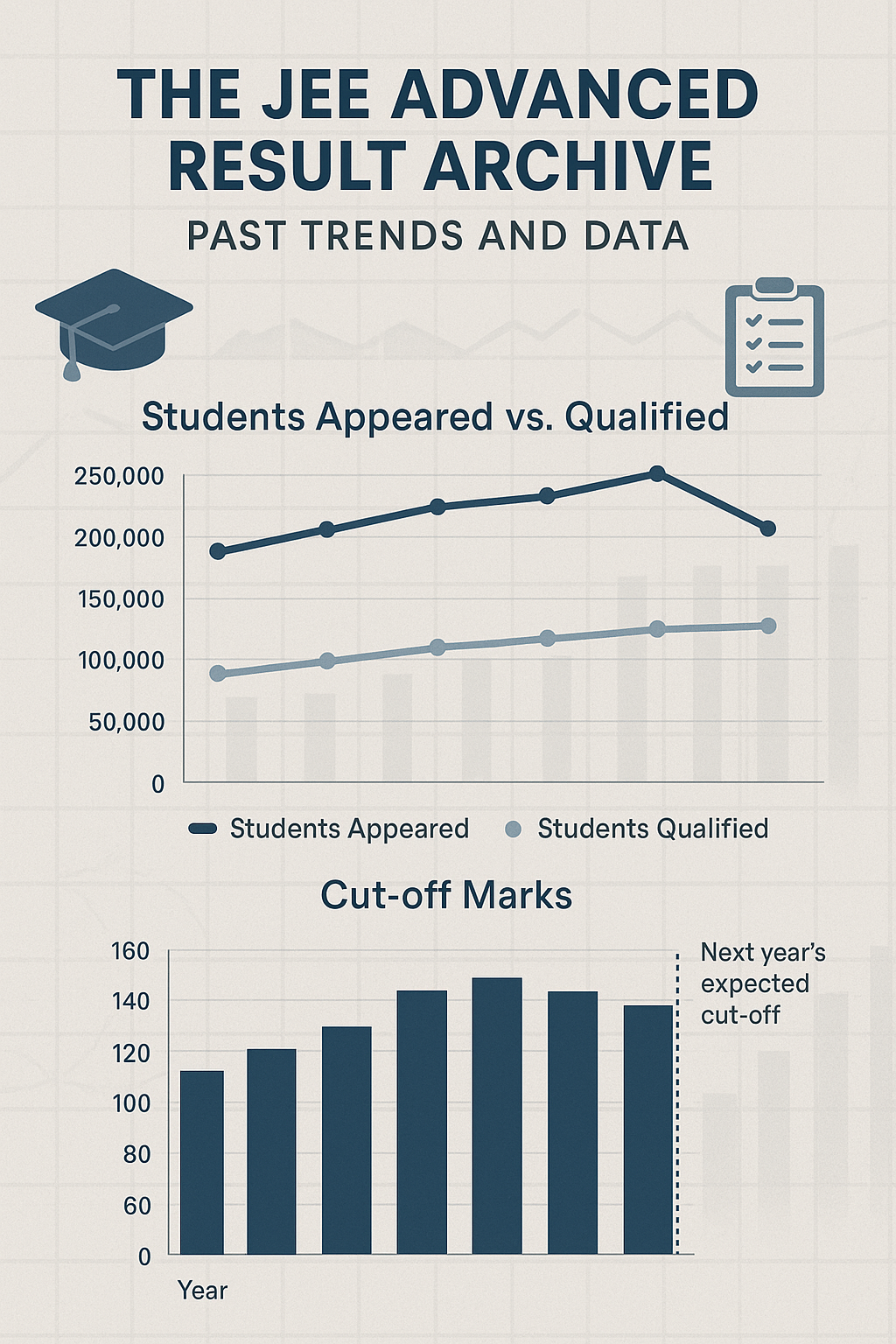
Explore the JEE Advanced Result Archive with past years’ data, insights on students appeared vs qualified, cut-off...

Got your JEE Advanced result? Here’s the complete step-by-step guide to the JoSAA counselling process from...
.jpg?width=500)
How many seats in JEE Advanced? Explore IIT seat distribution across all branches like CSE, Mechanical, Aerospace,...
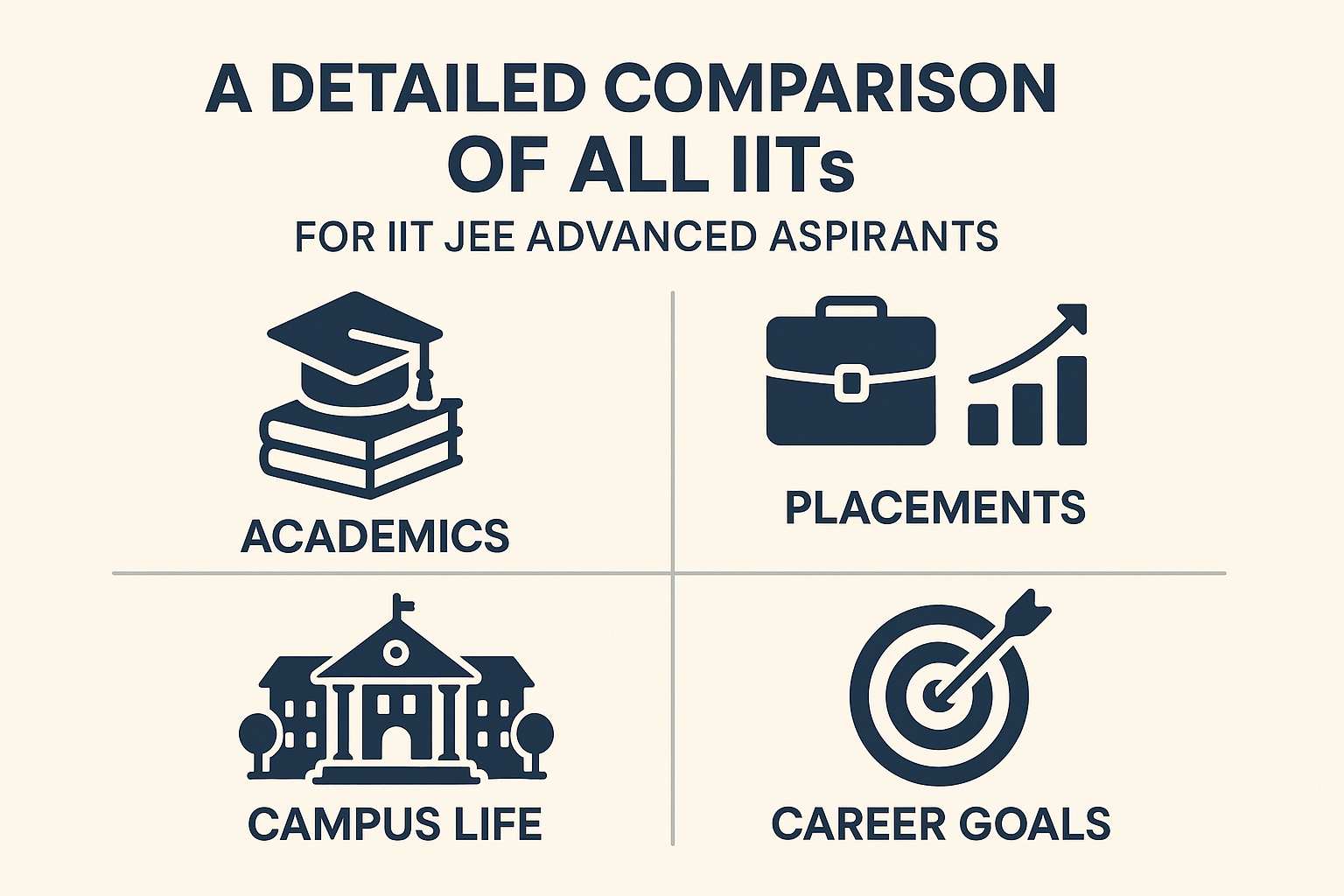
Compare all IITs for JEE Advanced aspirants. Learn about academics, placements, campus life, and find which IIT is...
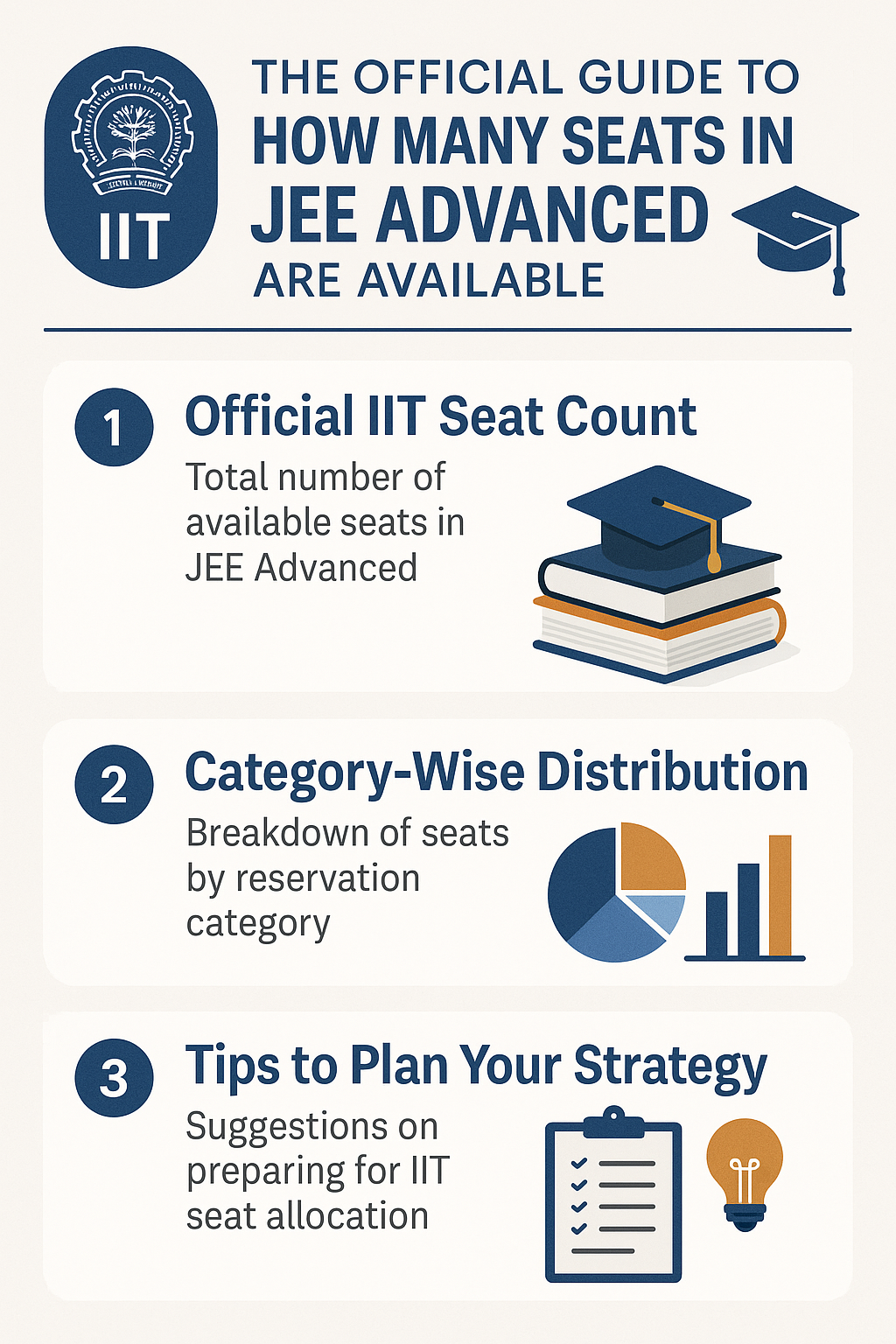
Wondering how many seats in JEE Advanced are available? Get the official IIT seat count, category-wise distribution,...
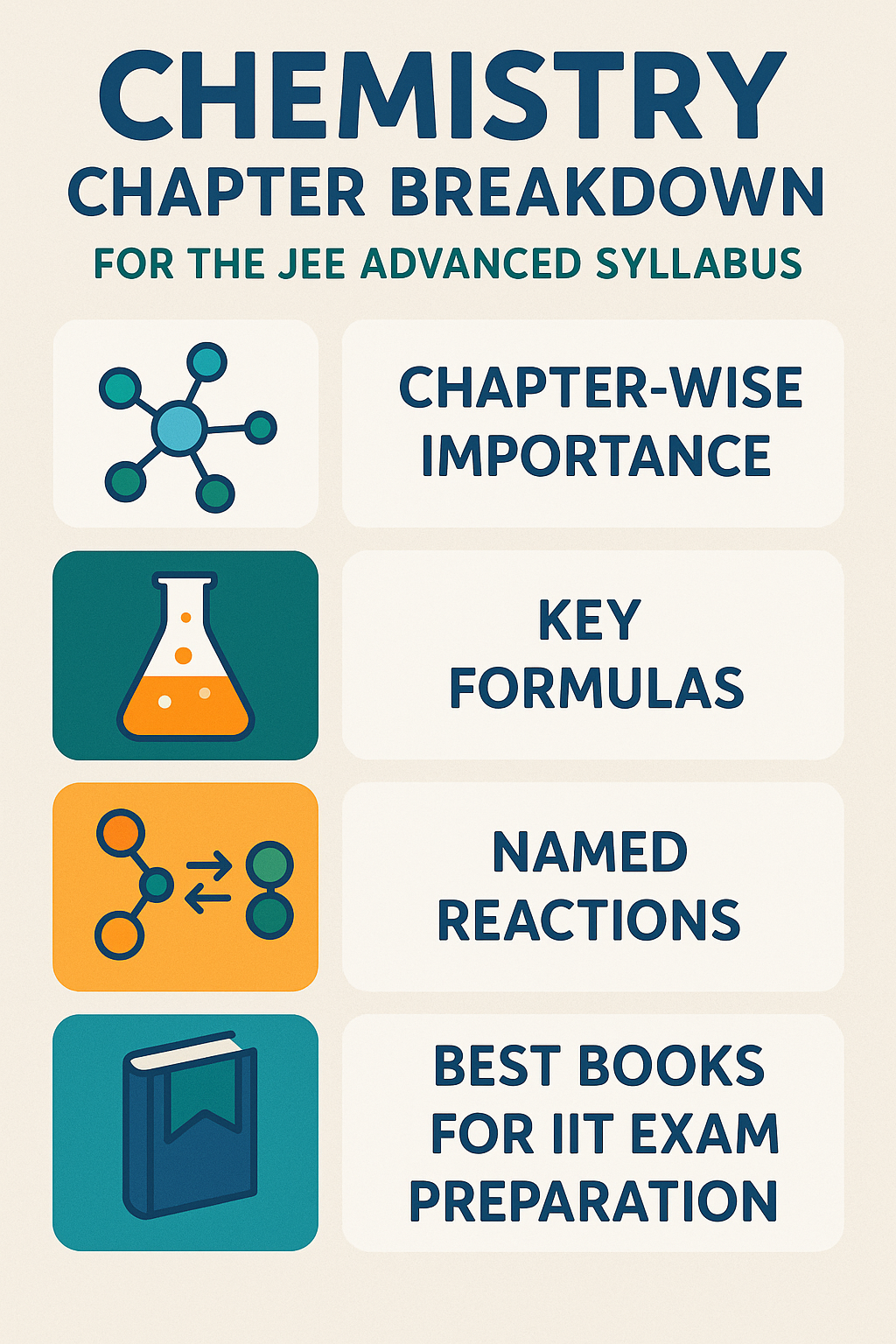
Explore the Chemistry JEE Advanced syllabus with chapter-wise importance, key formulas, named reactions, and the...
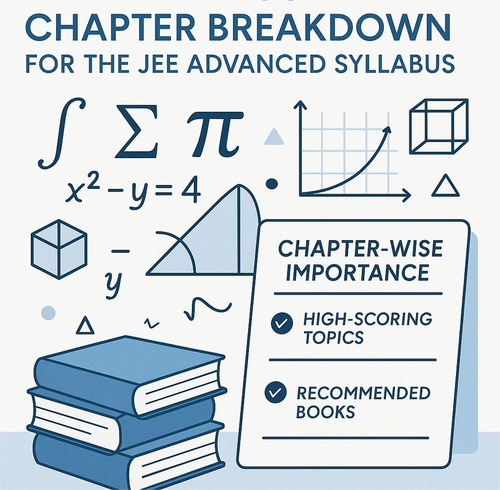
Explore the Maths JEE Advanced syllabus with chapter-wise importance, high-scoring topics, and the best books to...
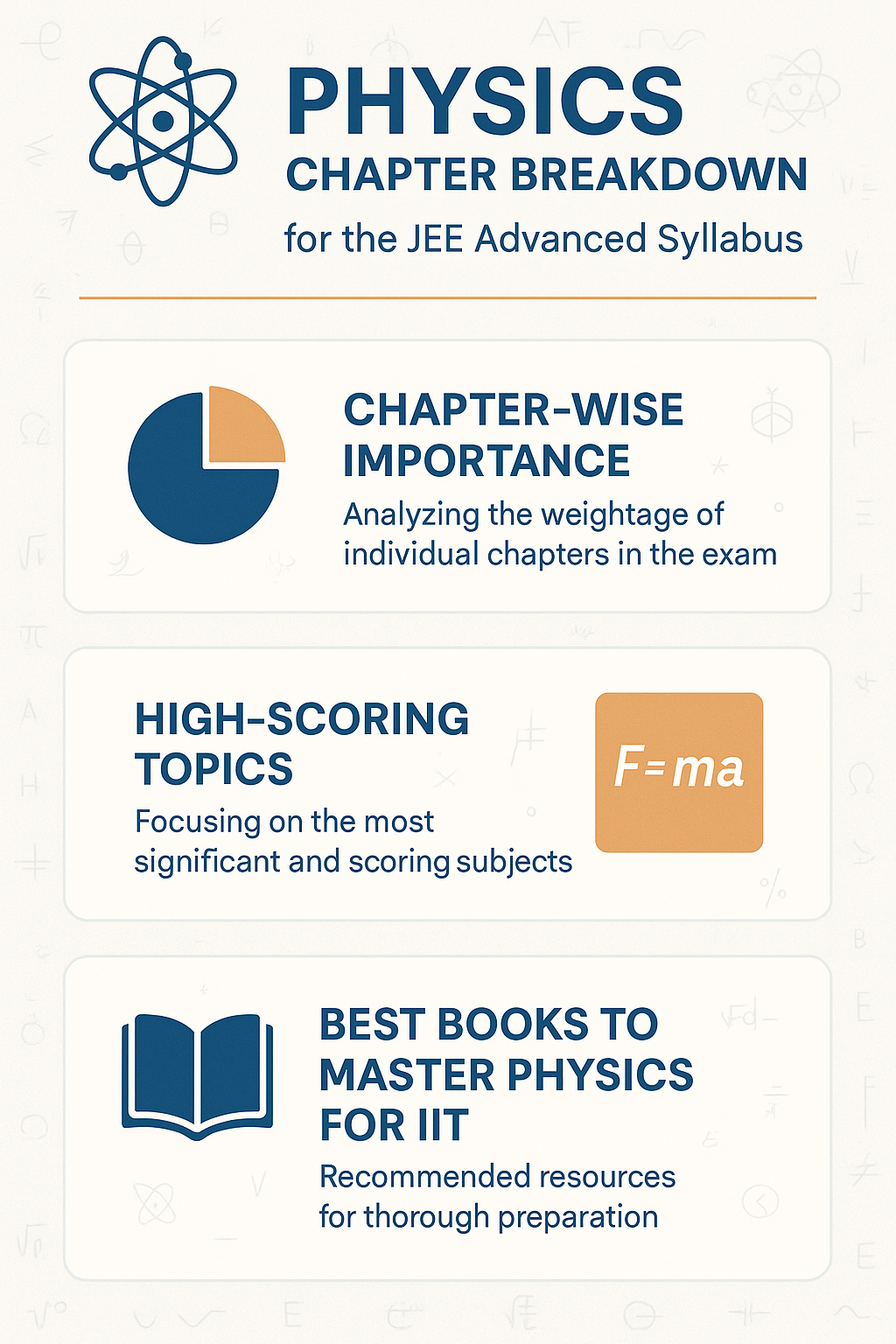
Explore the Physics portion of the JEE Advanced syllabus. Get chapter-wise importance, high-scoring topics, and the...

Learn the complete JEE Advanced registration process. Check eligibility, required documents, fees, and step-by-step...
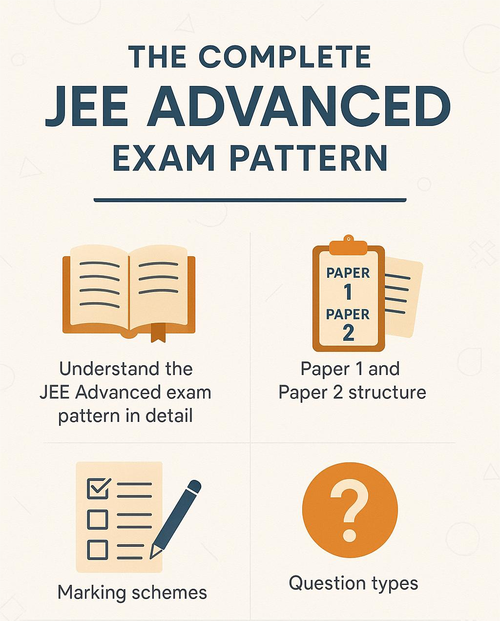
Understand the JEE Advanced exam pattern in detail. Learn about Paper 1 and Paper 2 structure, marking schemes,...

Find out the minimum percentile required for JEE Advanced eligibility. Learn category-wise cutoff trends, rules, and...
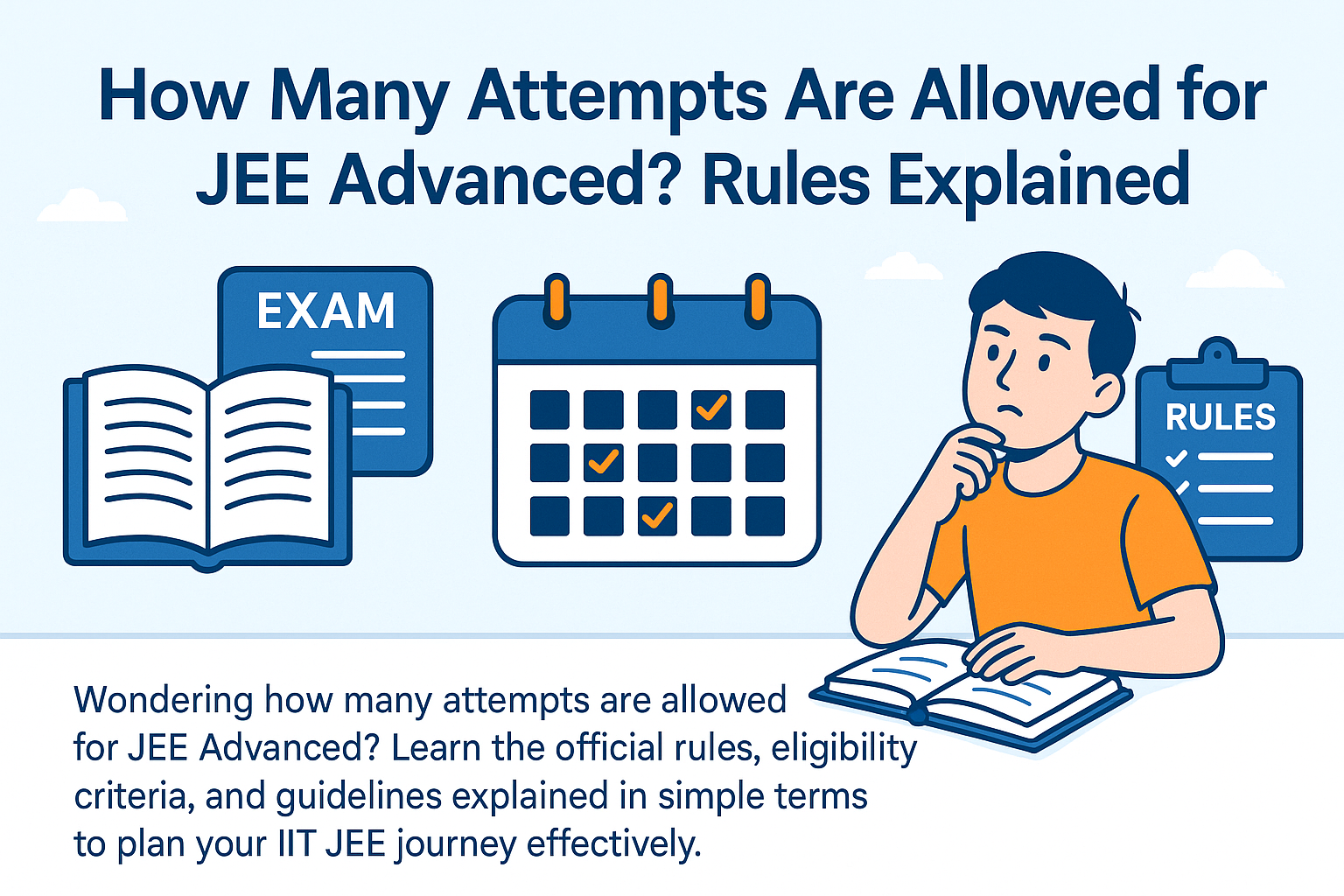
Wondering how many attempts are allowed for JEE Advanced? Learn the official rules, eligibility criteria, and...
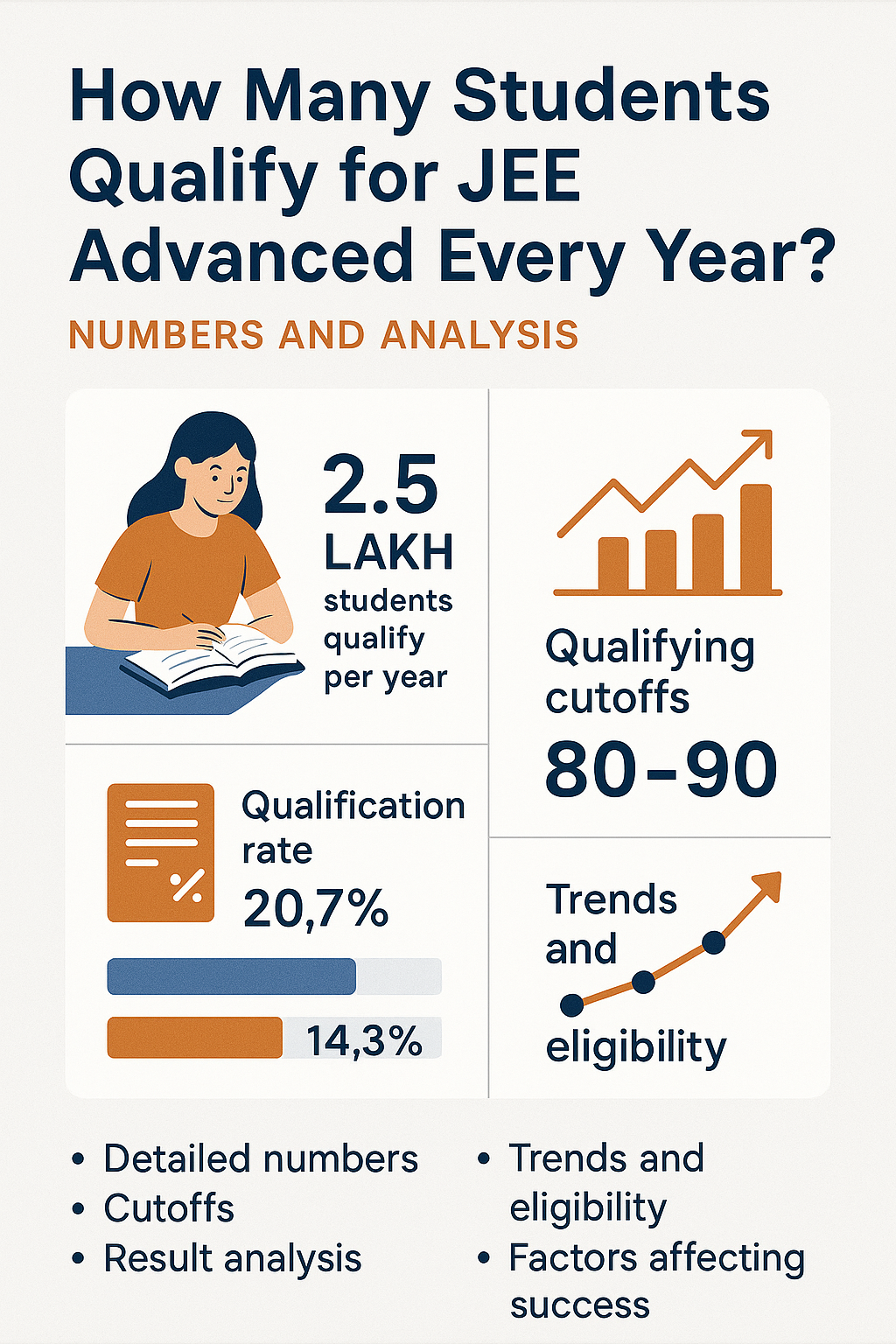
Discover how many students qualify for JEE Advanced every year with detailed numbers, cutoffs, and result analysis....

Stay updated with the latest JEE Advanced news. Get details on exam dates, registration process, results, and...
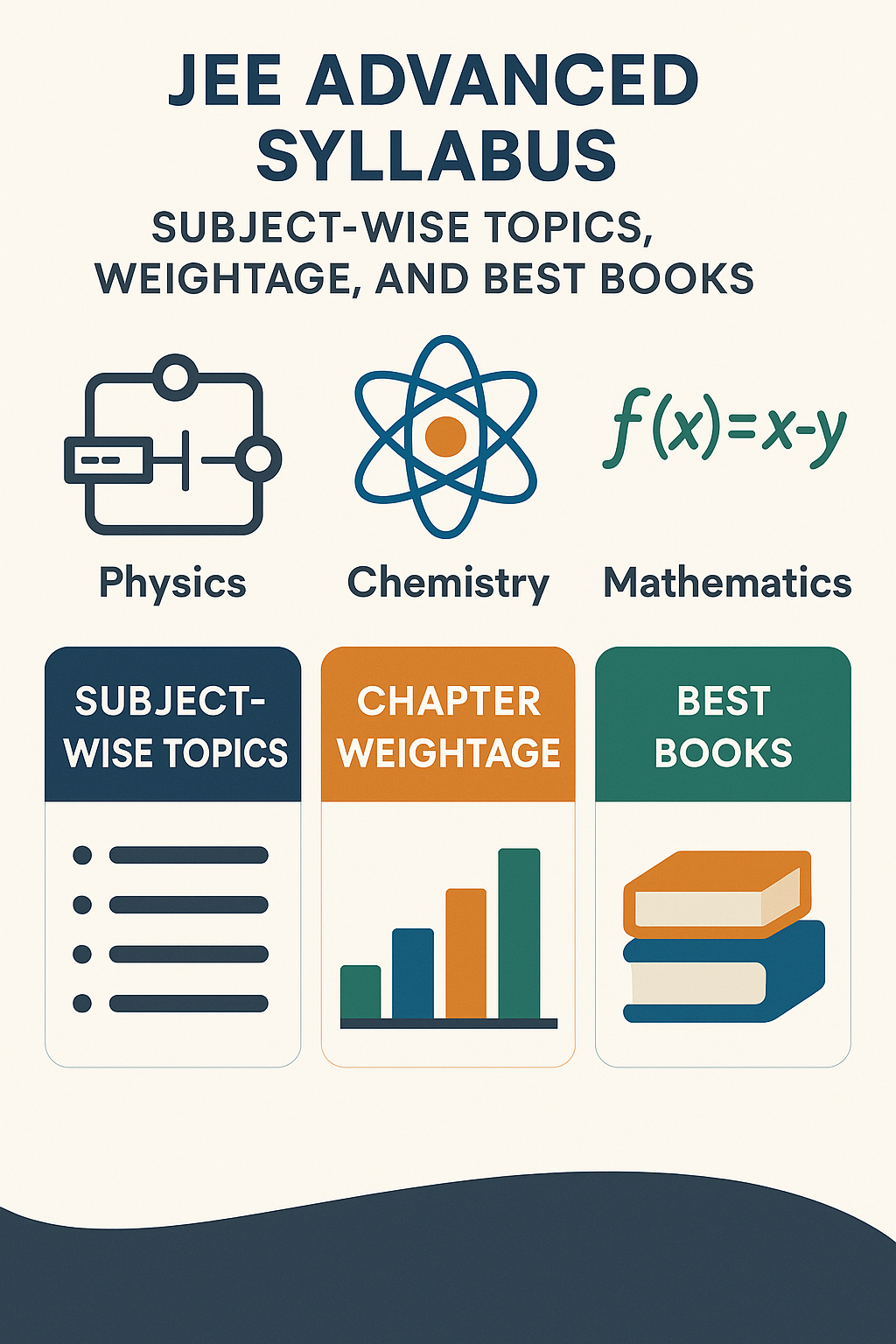
Explore the complete JEE Advanced syllabus with subject-wise topics, chapter weightage, and best books for Physics,...
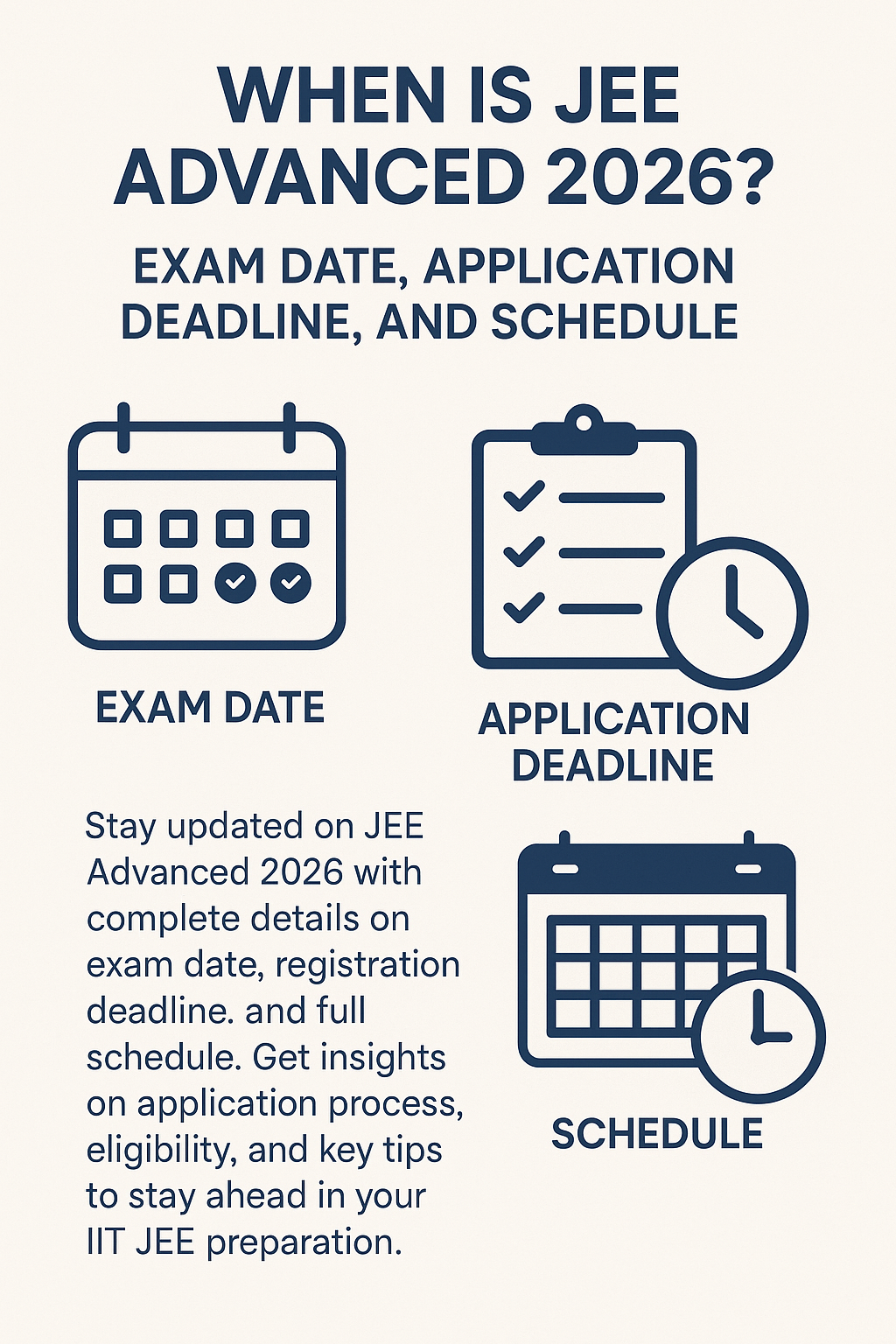
Stay updated on JEE Advanced 2026 with complete details on exam date, registration deadline, and full schedule. Get...
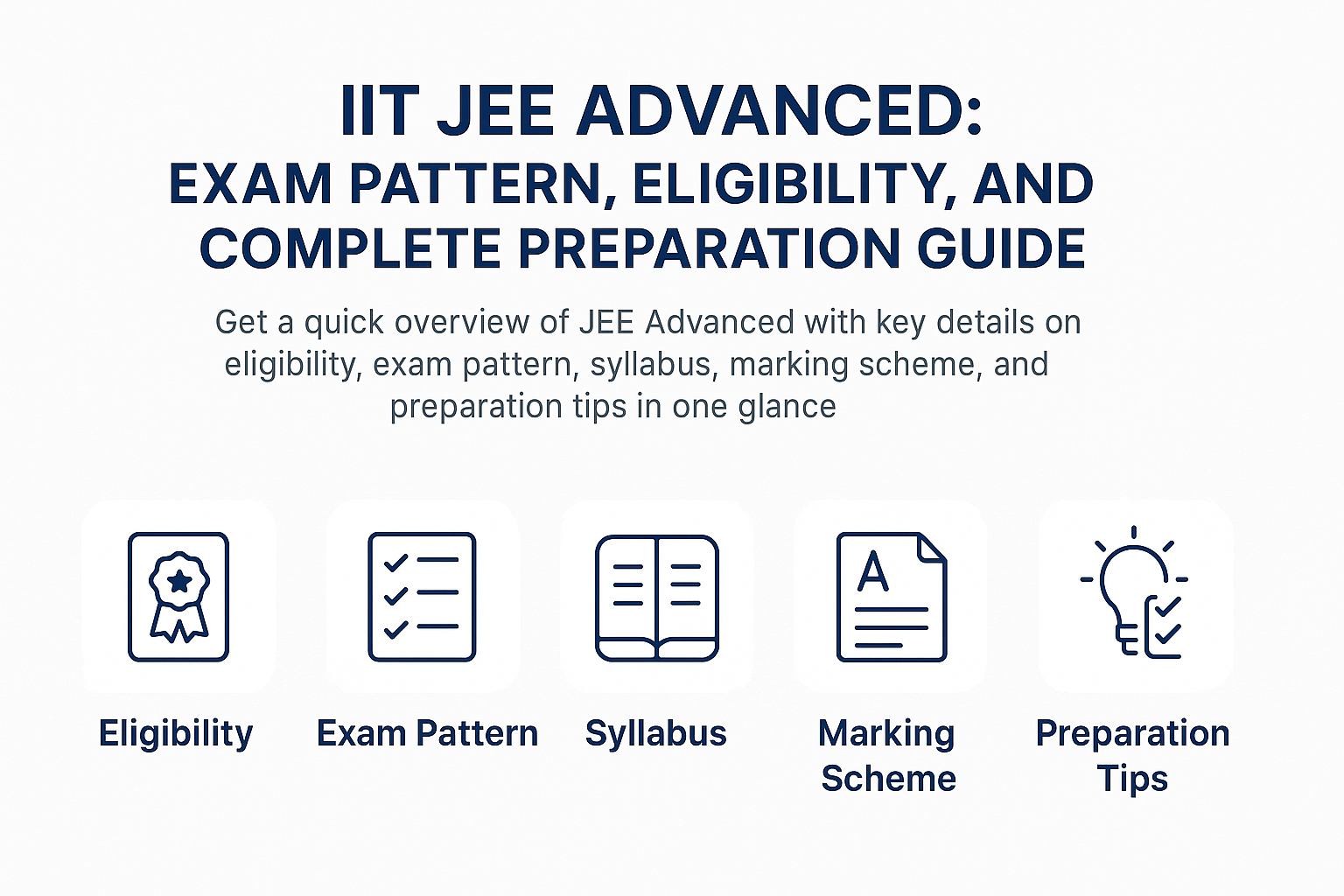
Get a quick overview of JEE Advanced with key details on eligibility, exam pattern, syllabus, marking scheme, and...

Curious about JEE Advanced marks vs rank? Explore expected cutoffs, past year trends, and how your score translates...
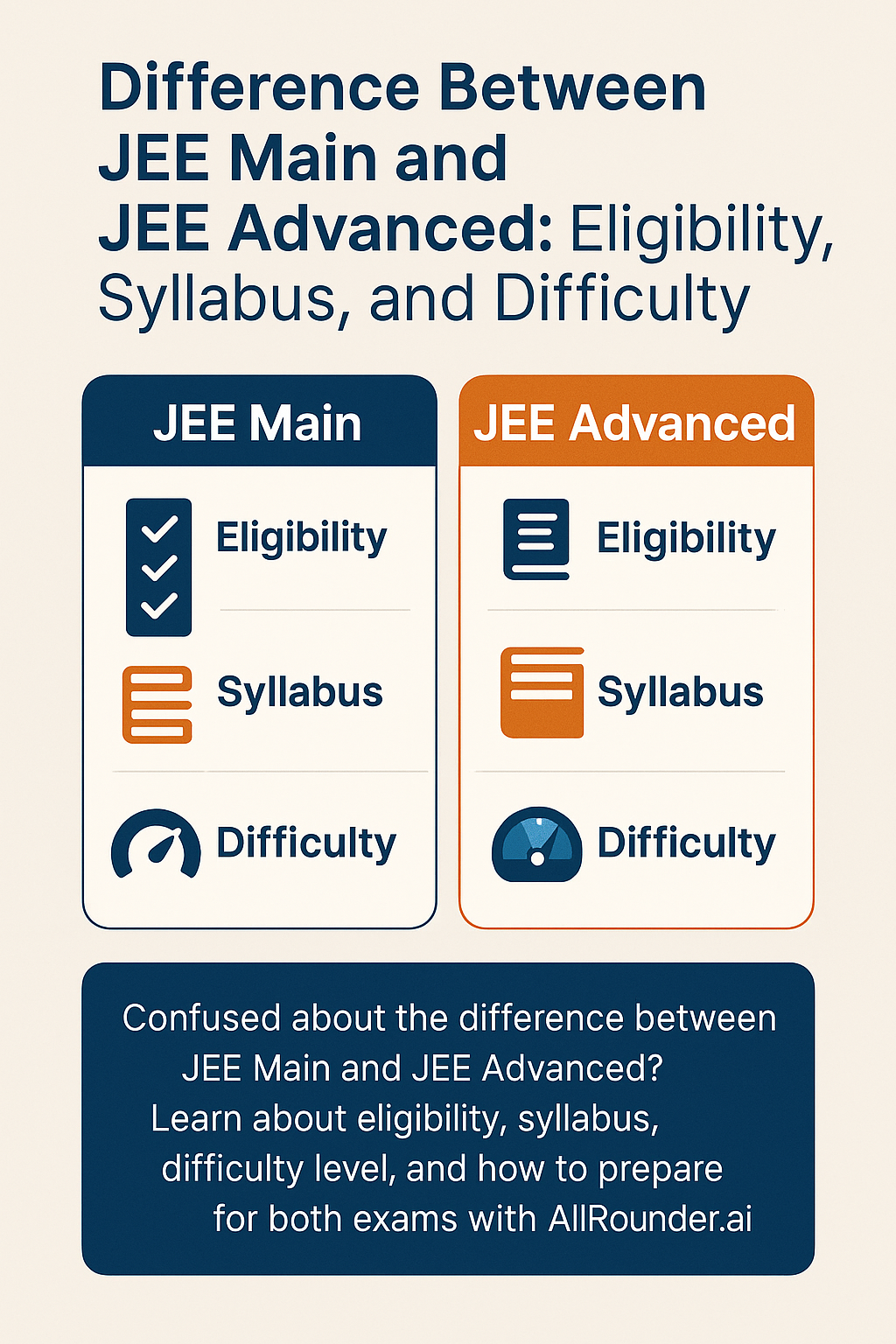
Confused about the difference between JEE Main and JEE Advanced? Learn about eligibility, syllabus, difficulty...
Resources
-
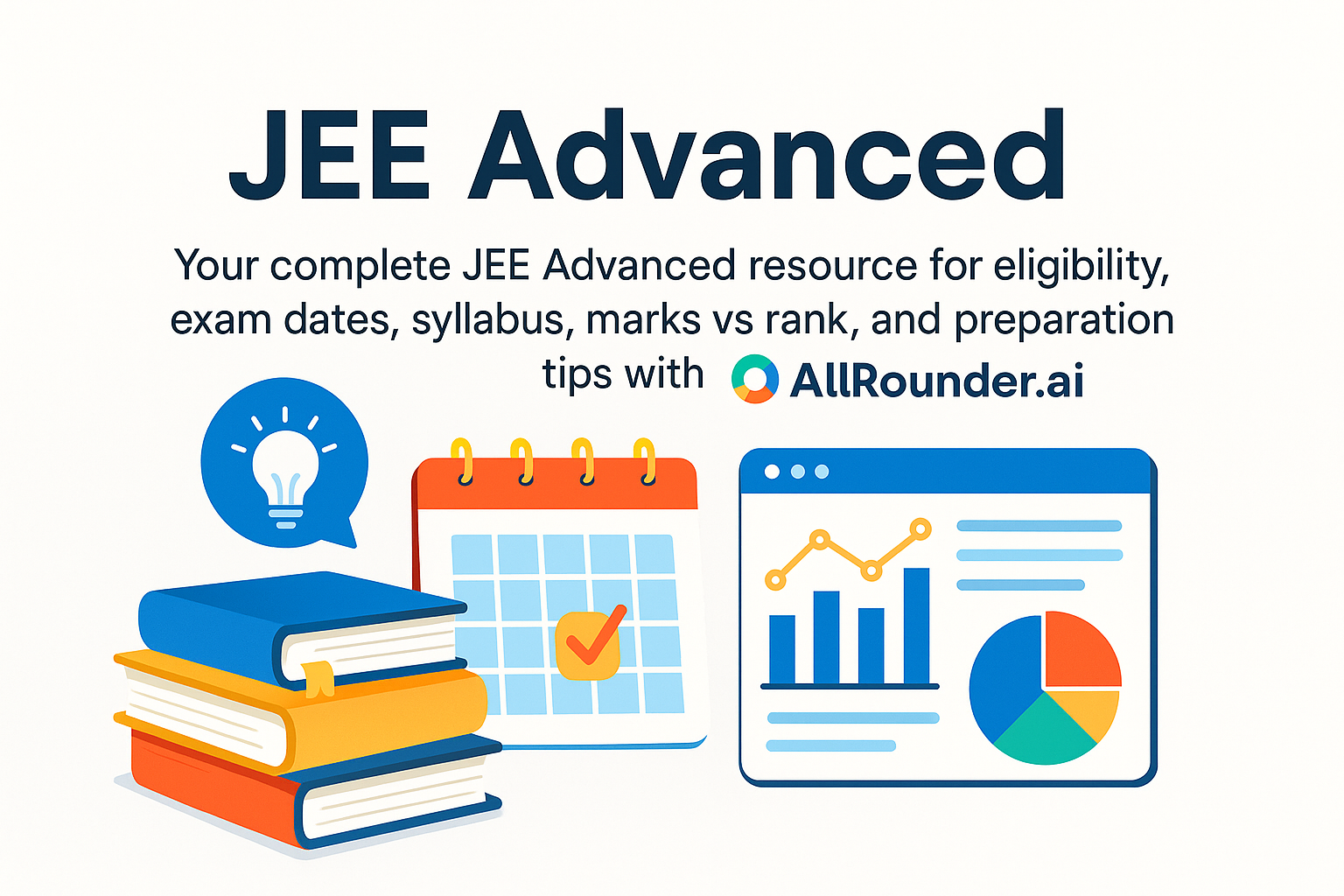
Your complete JEE Advanced resource for eligibility, exam dates, syllabus, marks vs rank, and...
-
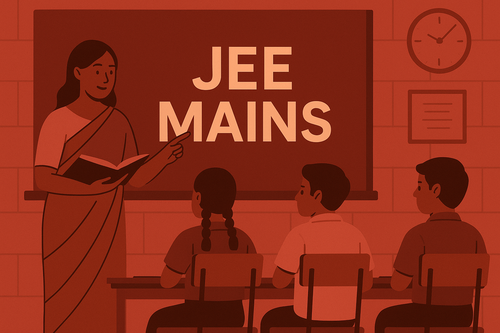
Understand the entire JEE Main process, from application and eligibility rules to the exam...
-

Explore the IB Board – a global curriculum emphasizing holistic, student-centered learning...
-

Learn about CBSE – India’s national school board offering a standardized curriculum, NCERT...
-

Explore everything about the ICSE board – its curriculum, subjects, exam format, and academic...

